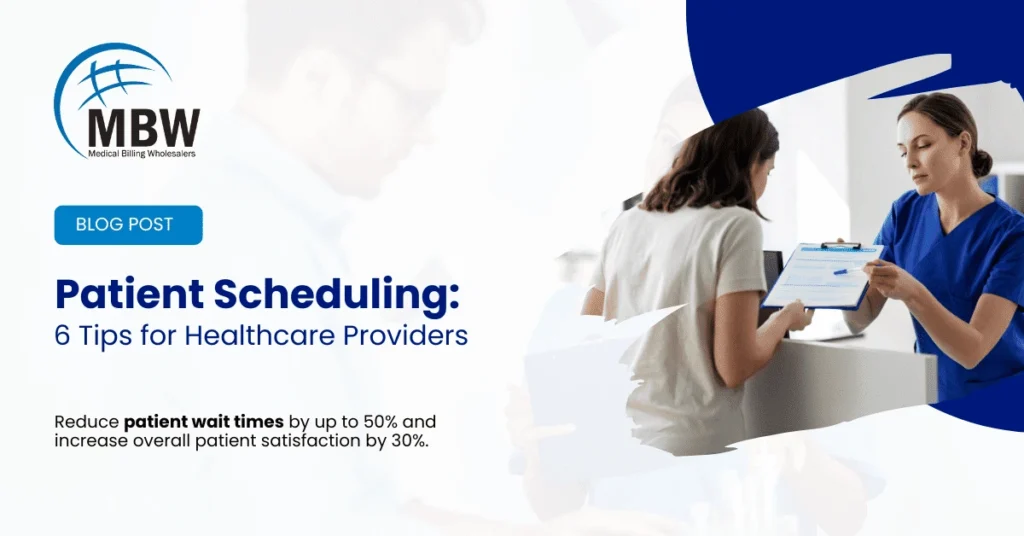
Successful Patient scheduling is crucial for any healthcare practice. Studies show that proper scheduling can reduce patient wait times by up to 50% and increase overall patient satisfaction by 30%.
This blog is for the healthcare providers looking to improve how they run their practices and make patients happier, by understanding the importance of patient scheduling and implementing 6 best practices.
Let us understand why Patient scheduling is important. Here are a few practical tips to help your practice run smarter, eliminate no-shows, and organize revenue better than before.
6 Best Practices for Patient Scheduling
1. Implement Advanced Scheduling Software

Using advanced patient scheduling software can transform a practice. It includes features such as online booking, automated reminders, and real-time updates streamline the scheduling process, reduce administrative work, and provide patients with an easy way to manage their appointments.
A HIMSS Analytics survey found that 72% of healthcare providers saw improved results after implementing advanced scheduling software.
2. Offer Online Booking Options
Patients expect the convenience of online booking in today’s digital age. Offering this option not only meets patient expectations but also reduces phone calls and administrative work for the staff. The online booking system should be user-friendly and integrated with the practice management software.
3. Use Automated Reminders to Reduce No-Shows & Cancellations
Automated reminders, sent via text messages, emails, or phone calls, are essential in reducing no-shows and cancellations. These reminders should be sent at strategic times, like a week before and a day before the appointment. Personalizing reminders with patient names and appointment details can make them more effective.
4. Manage Appointment Lengths to Prevent Scheduling Conflicts

Knowing the right duration for different types of appointments is crucial. Overestimating or underestimating the time needed can lead to scheduling conflicts and patient dissatisfaction.
Historical data should be used to determine average appointment lengths and adjust scheduling templates accordingly.
5. Maintain a Waiting List to Fill Last-Minute Openings
Having a waiting list for last-minute openings helps fill gaps caused by cancellations.
This practice ensures the schedule remains full and patients needing immediate attention can be seen sooner. Efficiently managing a waiting list requires quick communication and flexibility. According to the Advisory Board, maintaining a waiting list can reduce lost revenue due to cancellations by up to 15%.
6. Train Staff on Scheduling Best Practices for Optimal Performance

The effectiveness of a patient scheduling system depends on the staff managing it. Regular training on best practices, software usage, and patient communication is essential. Empowering the team to handle scheduling efficiently and address patient concerns proactively is crucial.
The American Academy of Professional Coders (AAPC) reports that well-trained staff can improve scheduling efficiency by up to 30%.
“Well-trained staff are the backbone of efficient scheduling systems.”
The Importance of Patient Scheduling
1. Improving Patient Experience

When patient scheduling is done well, it greatly improves the patient experience. A survey by the American Medical Association found that 67% of patients see timely appointments as very important. Patients appreciate minimal wait times, smooth interactions, and the ability to book appointments easily.
A good patient appointment system makes patients feel respected and valued, building loyalty and trust in the healthcare provider.
“Patients value their time as much as their health. Proper scheduling shows we respect both.”
2. Using Resources Effectively to Increase Efficiency and Reduce Costs
Patient scheduling ensures that medical staff, equipment, and facilities are used properly. By reducing idle time and preventing overbooking, practices can improve productivity and manage resources better. This leads to improved efficiency by saving a lot of time and money.
“Optimal use of resources leads to better care and lower costs.”
3. Reducing No-Shows and Cancellations with Proactive Patient Engagement

No-shows and last-minute cancellations disrupt workflows and impact revenue.
The average no-show rate in healthcare practices is about 18%. By using smart patient scheduling practices like appointment reminders and flexible rescheduling options, these issues can be significantly reduced, ensuring a more stable and predictable schedule.
“Reducing no-shows is not just about filling the schedule; it’s about providing consistent care to our patients.”
4. Improving Revenue Cycle Management by Ensuring Timely Appointments and Follow-Ups
A well-organized patient scheduling system positively affects the revenue cycle. Timely appointments and follow-ups help with faster billing and collections. A reduction in no-shows and cancellations also leads to more consistent revenue, improving the practice’s financial health.
“Timely appointments and follow-ups are keys to a healthy revenue cycle.”
5. Managing Workflow to Improve Staff Productivity and Reduce Stress
Proper patient scheduling helps manage the workflow in a healthcare practice. By avoiding overlaps and spacing appointments properly, the staff can handle their tasks more productively.
This results in a more organized and less stressful work environment. A report from the Journal of Healthcare Management indicates that well-managed workflows can increase staff productivity by up to 15%.
“A well-managed workflow means happier staff and better care.”
6. Better Communication to Build Trust and Improve Patient Adherence
A good patient scheduling system improves communication between healthcare providers and patients. Patients are well-informed about their appointments and any changes. This transparency builds trust and improves patient adherence to treatment plans.
“Clear communication builds trust and improves patient outcomes.”
Common Challenges and Solutions in Patient Scheduling
| S.No | Challenge | Solution |
|---|---|---|
| 1 | Overbooking and Underbooking | Use advanced scheduling software to analyze historical data and predict patient flow. |
| 2 | Managing No-Shows and Last-Minute Cancellations | Implement automated reminders and maintain a flexible rescheduling policy. |
| 3 | Ensuring Staff Efficiency | Schedule systems that allow easy management of staff availability and workload. |
| 4 | Integrating with Other Systems | Choose a comprehensive system that offers integration with other practice management tools. |
| 5 | Enhancing Patient Communication | Provide automated reminders, easy access to appointment details, and direct communication channels. |
Patient Scheduling Software
Patient scheduling software is a game-changer for healthcare practices. This technology simplifies the process of booking, rescheduling, and managing appointments.
With features like real-time updates, online booking, and automated reminders, this software can significantly reduce administrative burdens. By integrating with existing practice management systems, this RCM software ensures a seamless flow of information, making it easier to manage patient data and schedules.
Some key benefits of using patient scheduling software include:
- Online Booking: Patients can book appointments at their convenience, reducing the need for phone calls and administrative work.
- Automated Reminders: Sends timely reminders to patients, reducing the likelihood of no-shows.
- Real-Time Updates: Provides up-to-date information on appointment status, helping staff manage schedules more effectively.
- Integration with Practice Management Systems: Ensures a seamless flow of information, making it easier to manage patient data and schedules.
- Flexibility: Allows for easy rescheduling and management of appointments, improving the patient experience.
What is Patient Appointment Scheduling?

Patient appointment scheduling is the backbone of an organized healthcare practice. Efficient scheduling ensures that patients are seen promptly, staff workloads are balanced, and resources are utilized effectively.
By implementing a patient appointment scheduling system, healthcare providers can enhance the overall patient experience and improve operational efficiency.
Conclusion
By following these best practices, healthcare providers can create a best Patient scheduling system that increases patient satisfaction, effectively uses resources, and improves overall efficiency.
Implement these strategies to manage your practice and ensure a seamless, patient-centred scheduling process. For more insights and tips, subscribe to our newsletter and stay updated with the latest in healthcare management.
Additionally, explore our services for patient statement generation and other revenue cycle services to further enhance your practice’s efficiency.
Frequently Asked Questions (FAQs) on Patient Scheduling
What is patient scheduling and why is it important?
Patient scheduling involves organizing and managing appointments for patients in a healthcare setting. It is crucial for reducing wait times, enhancing patient satisfaction, effectively using resources, and improving overall practice efficiency. Read more on the benefits of patient scheduling.
How can automated reminders reduce no-shows?
Automated reminders, sent via text messages, emails, or phone calls, keep patients informed about their appointments. These reminders prompt patients to confirm or reschedule, thereby reducing the likelihood of no-shows.
What are the benefits of using advanced scheduling software?
Advanced scheduling software streamlines the appointment process, reduces administrative workload, offers online booking options, provides real-time updates, and integrates with other practice management systems. This leads to increased efficiency and patient satisfaction. Learn more about advanced scheduling software.
How can a waiting list help manage cancellations?
A waiting list allows practices to fill last-minute openings caused by cancellations. By quickly communicating with patients on the waiting list, the schedule remains full, and patients in need of immediate attention can be accommodated.
Why is training staff on scheduling best practices important?
Well-trained staff are essential for managing the scheduling system efficiently. Training ensures that staff are familiar with best practices, software usage, and effective patient communication, leading to improved scheduling efficiency and patient satisfaction.
Schedule a call with our leaders to transform your revenue cycle.
Contact us at [email protected] or fill out the form below. See how Medical Billing Wholesalers can help your healthcare organization succeed by visiting Medical Billing Wholesalers.

